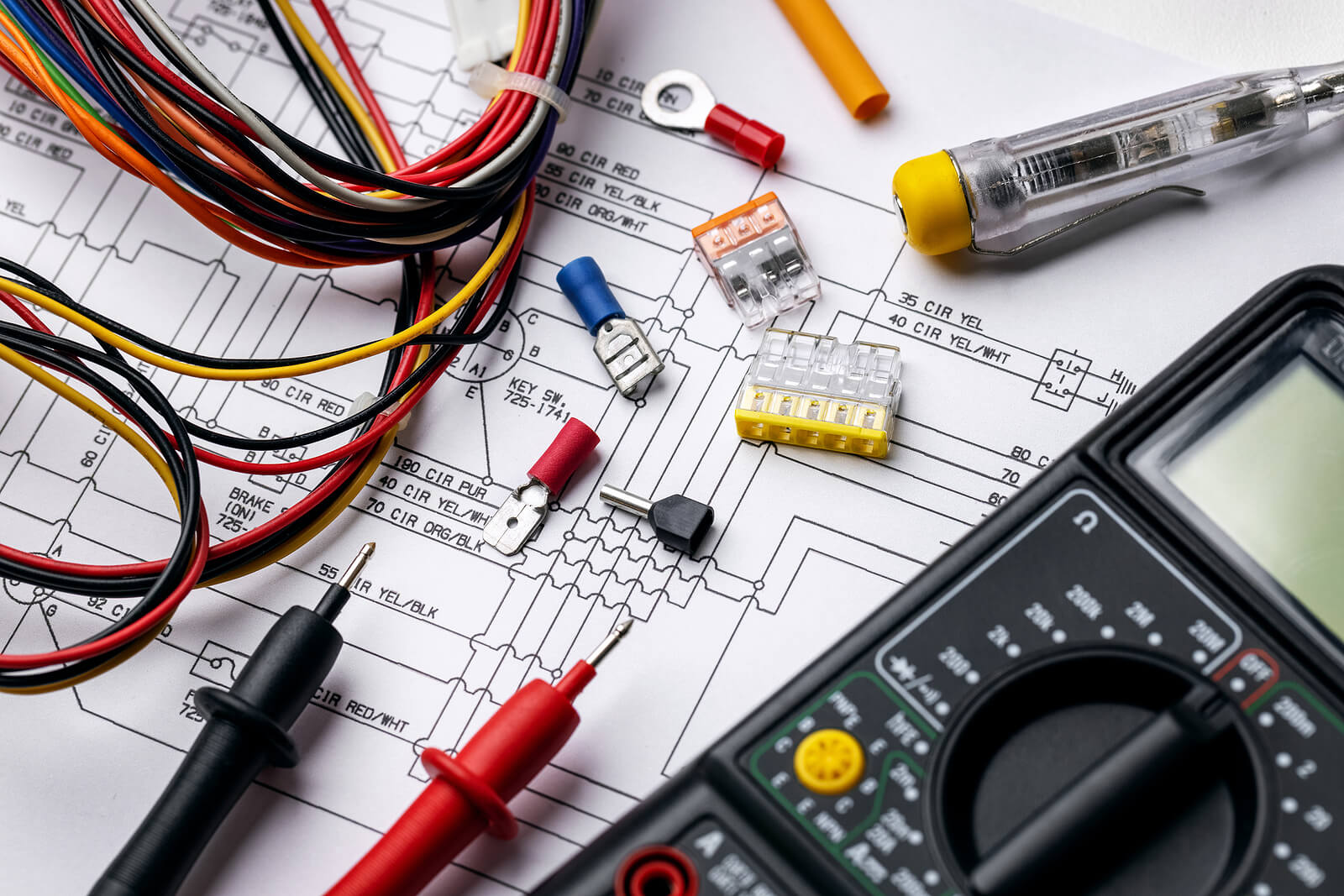How to Make an Electrical Plan for a New Home

A house electrical plan is a drawing that contains architectural and engineering elements that outline the power, wiring, lighting, and communication components in your home. Also known as a house wiring diagram, it is intended to show how energy is distributed to equipment and appliances. Electrical diagrams are often drawn using specialized software.
An electrician can use your electrical drawing to:
- Troubleshoot your power system
- Verify it is compliant with local building codes
- See where electrical components are in relation to structural and architectural elements
- Plan your electrical installation or remodeling project
- Accurately install various appliances and equipment
Drafting an Electrical Plan
Whether you use software or pencil and paper, you can save a lot of time by having a carefully drawn plan. It should incorporate the locations of cables, switches, fixtures, appliances, and other electrical elements. To effectively draft you plan, you’ll need to:
- Represent the Layout of Your Home: Simple graft paper or planning software can be used to make a scale drawing. Include each room and everything in it, including counters, stoves, cabinets, beds, televisions, computers, etc. Gather colored pencils to represent each circuit. A straightedge, compass, and other drawing aids help as well.
- Learn Your Symbols: Electrical symbols may be clearly placed in a software application for you to pick from. If you’re working freehand, you’ll want to brush up on widely accepted symbols to identify where wires, switches, relays, circuits, receptacles, and all individual electrical components are.
This list of electrical drawing symbols from the U.S. Nuclear Regulatory Commission will help you understand the conventions and their uses.
- Start with the Interior Layout: Begin your diagram starting with entry and exit points. Identify the placement of lights, AC switches, and fans. Next, label where electrical outlets are (usually near counters, tables, and furniture), and then identify the location of computers, TVs, printers, washing machines, and other large appliances.
- Complete a Walk Through: With your layout drawn, print it and walk around your home. If you haven’t started final construction, you can adjust the arrangement as needed. And if you’re diagramming existing installations, walk through and confirm that the placement of electrical elements matches your drawing.
Why House Electrical Plans Are So Important
When properly drawn, an electrical plan can highlight potential risks that professionals can address to avoid damage. It can avoid delays and ensure your system runs properly and safely. Details such as the types of cables installed, wire lengths, and specific components help guide an electrician and keep project costs low. A technician can also use the plan to anticipate any hazards and avoid injury.
Also, various standards exist for electrical plans. An electrical drawing should be available before any work is done, and it should represent an exterior electrical site plan, interior electrical power plan, interior lighting plan, and brief documentation. This means your diagram should identify the building’s location and label outside wiring. It should also include a complete floor plan with electrical systems, power riser diagrams with panelboards, and the layout of control wiring.
Electrical engineers can use your plan to quickly determine where wires connect, appliances/lights/outlets are placed, and how to proceed with installation or repair work.
Request Help from Express Electrical Services
At Express Electrical Services, we specialize in all electrical solutions that our Southern California customers might need. We provide same-day and emergency electrical services. But if you need help drafting your electrical plan, our licensed technicians can assist you. To request assistance, schedule an in-home visit, or learn about our specials, coupons, and financing, call 323-727-7799 today.

Leave A Comment